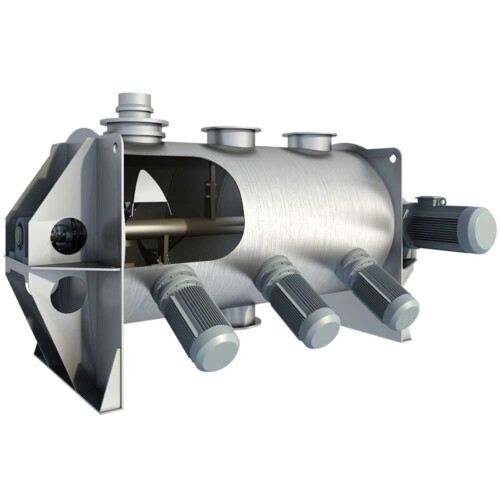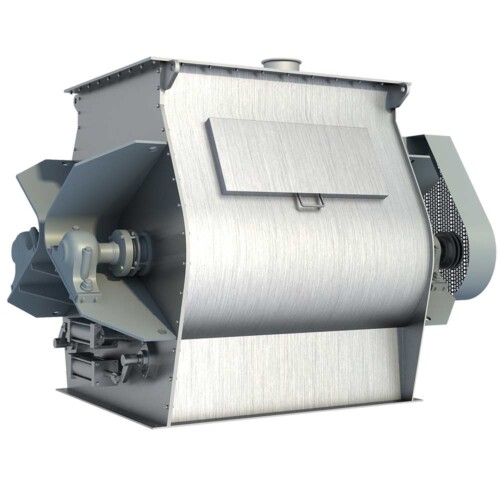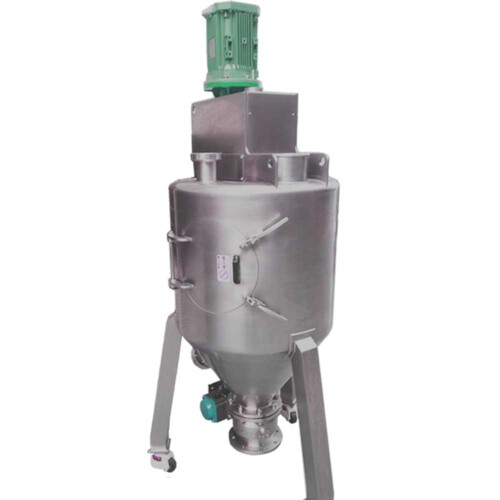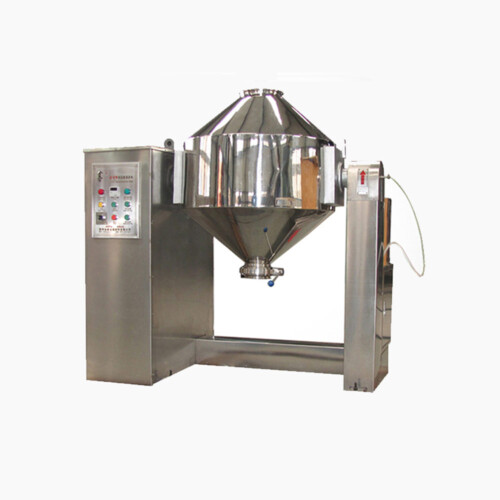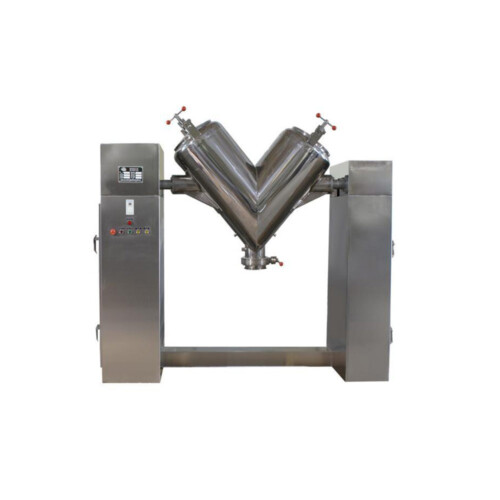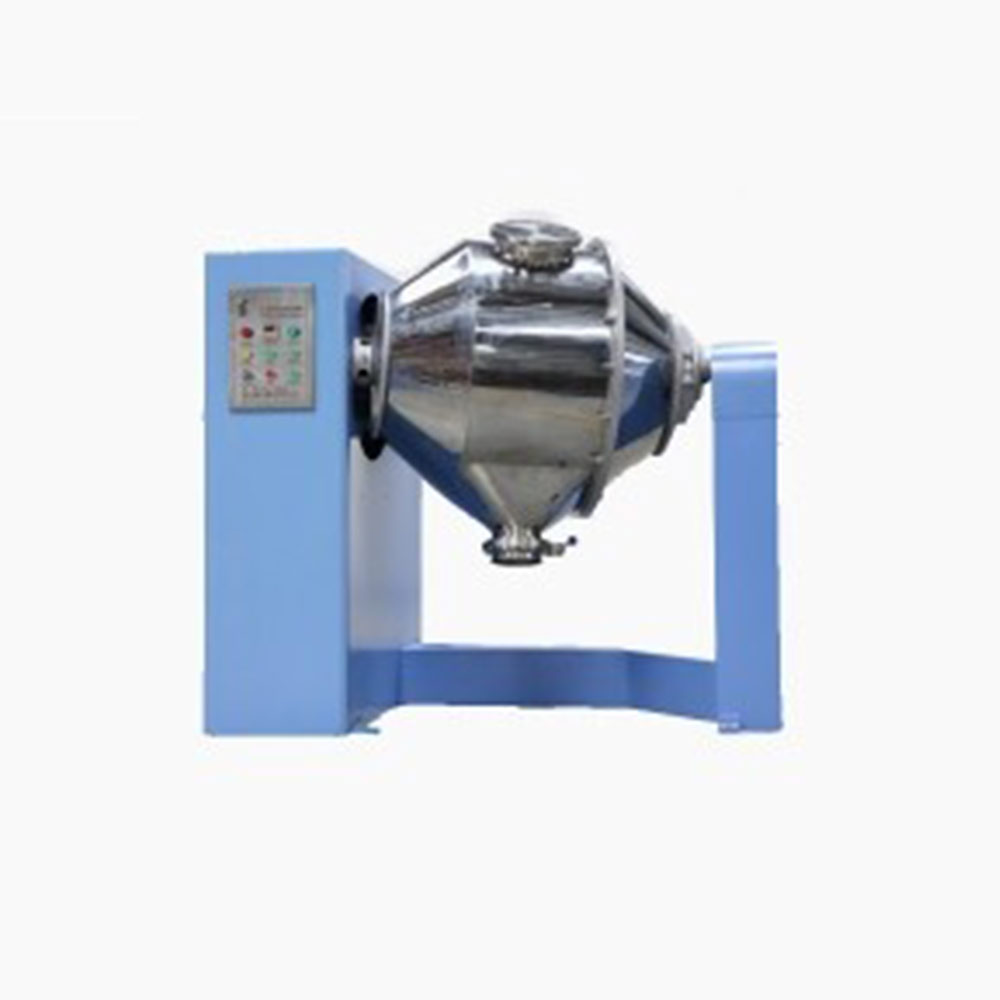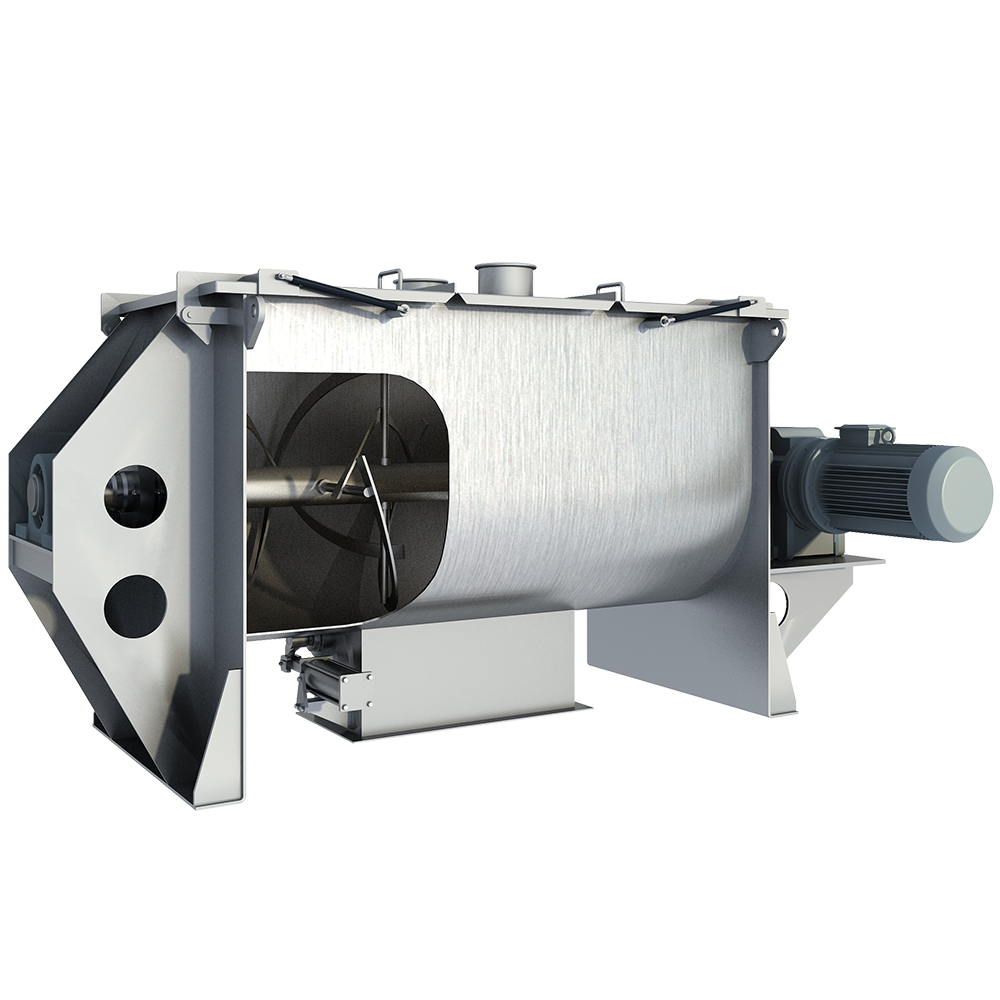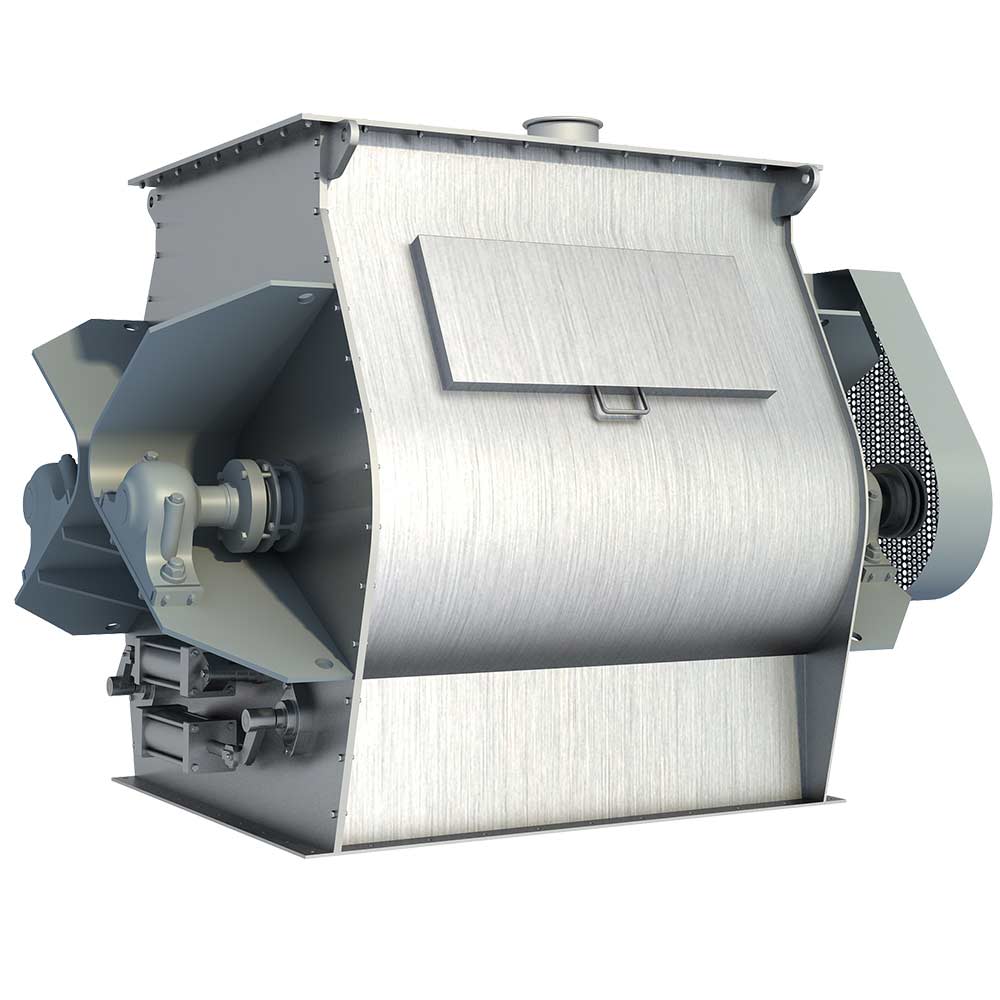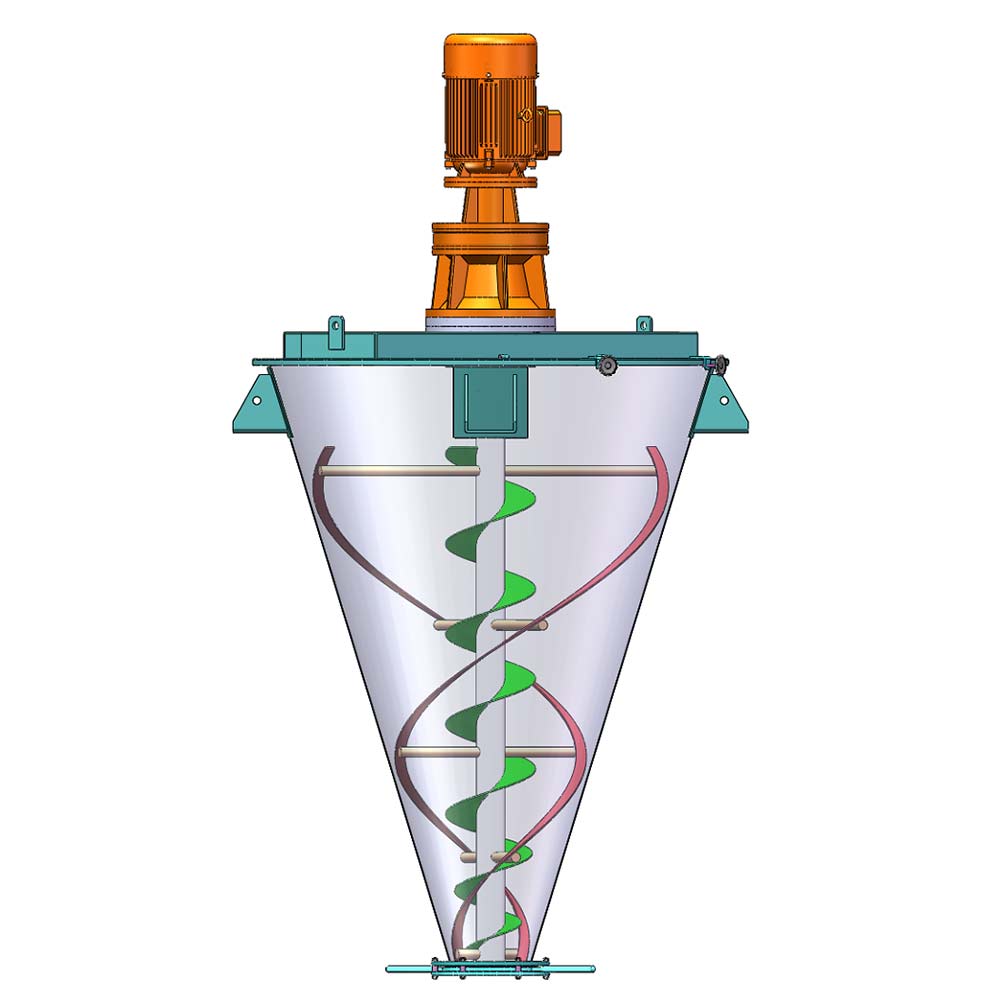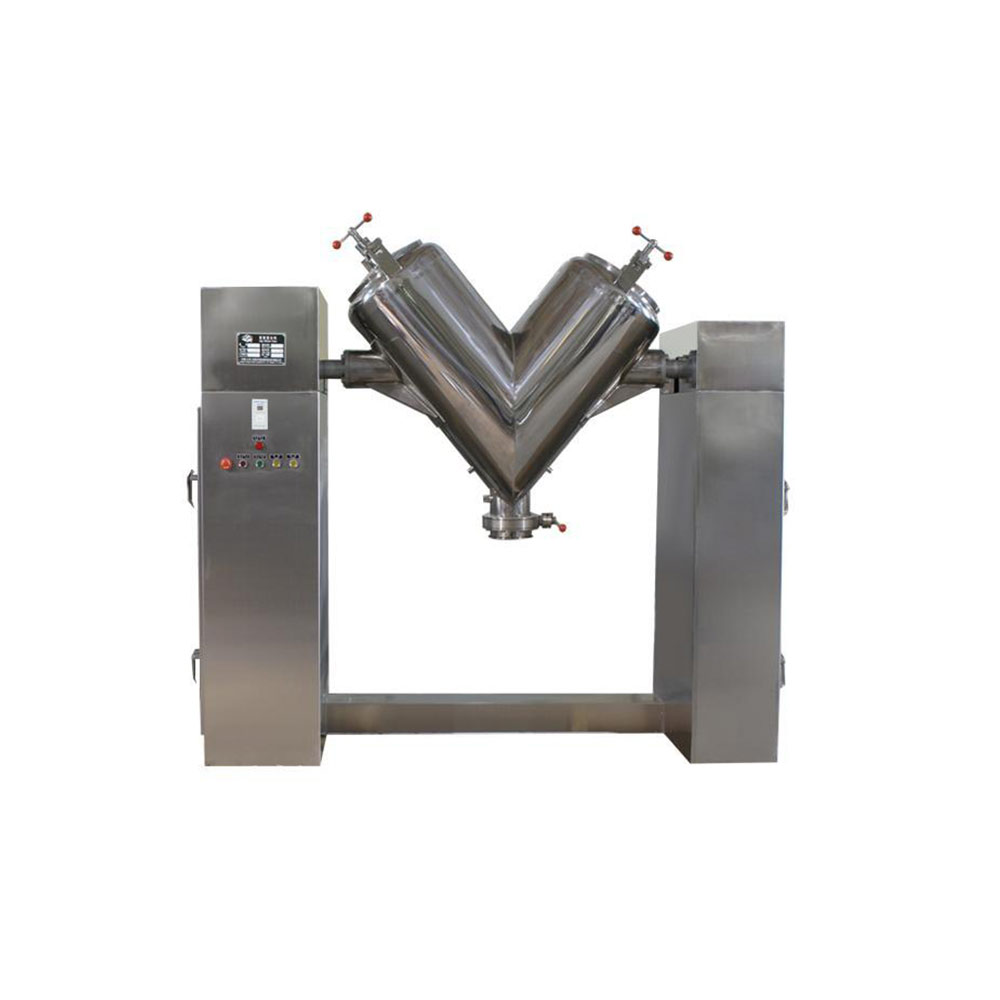Ask An Expert
Frequently Asked Questions
Yes, We can supply simple stand alone panels or automated PLC controlled systems. We normally install and test all controls on our mixers before they are shipped.
Yes, we normally test the mixers before they are shipped and mark out the wire need to connect on the control box.
We manufacture specialty mixing equipment for powder & bulk materials. Included are ribbon blender, plough mixer, conical screw mixer, twin shaft paddle mixer, V blender, double cone blender and other auxiliary equipment such as screw conveyor, quantitive auger filler.
We sell across the world, our cusotmers distribute 5 continents.
Share Us With Your Network
Rotary Mixers: An In-Depth Guide to Types, Benefits, and Industrial Applications
Introduction
The industrial blending process and powder processing industry relies heavily on rotary mixers as essential equipment. The industry uses rotary mixers across departments including pharmaceuticals along with chemicals and food manufacturing and agricultural applications as well as the plastic sector because of their efficiency and their ability to work easily with dry powders and granules.
The following guide introduces major types of rotary blending equipment which consists of double cone blenders as well as V-type blenders and double movement mixers. The guide explains the fundamental operation methods and main benefits as well as correct application scenarios of these devices. Knowledge of these machines helps operators achieve better efficiency and product consistency together with standard production results.

Double Cone Blender
What Is a Rotary Mixer?
Dealings between materials within a sealed drum occur using rotary mixers which deliver mechanical rotor motions. The motion of the machine creates complete mixing between particles which results in uniform mixture content. Gentle processing operations make these mixers suitable for sensitive materials including fragile as well as heat-sensitive materials.
Dry powders and particulate solids mostly utilize rotary mixers for their mixing needs. The mixable attributes of both tumbling movement and vessel internal shape help achieve efficient blending without harming the product.
Types of Rotary Mixers
1. Double Cone Blender
The double cone blender represents one of the most commonly used rotary mixers and it maintains its name from its specific conical design. The device serves industries that need blended powders combined with granules requiring minimal damage by employing a careful mixing process.
Features:
- Simple design with two conical ends
- Gentle tumbling action
- Ideal for heat-sensitive or fragile products
- Easy discharge and cleaning
Applications:
- Pharmaceutical compounds require double cone blenders to mix active substances with excipients.
- The processing of food combines spices with milk powders as well as nutritional supplements through this particular machine.
- Chemicals for powders and additives
- Cosmetics for powders and dry formulations
2. V-Type Blender
The V-type blender which companies usually call both V blender and twin-shell blender features an interior chamber designed in a V-shaped configuration. The device implements a chamber rotation which creates material separation that leads to reformed unifiable combinations throughout the blending process.
Features:
- This machine performs efficient mixing through its repeated converging and diverging operational method.
- Minimal heat generation
- High mixing uniformity
- Suitable for powders and granular materials
Applications:
- Laboratories together with production facilities utilize this equipment for mixing purposes.
- Suitable for pharmaceuticals, food additives, and plastic powders
- Plastics and dyes can achieve color and pigment blending through the combination of colorants with pigments.
3. Double Movement Mixer
This mix operates by connecting tumbling motions to internal agitator components thus delivering two mechanisms that enhance blending performance. Both the rotating shell and agitator blades create efficient and uniform blending that handles complex mixing operations.
Features:
- This design provides excellent mixing results when working with sticky and cohesive powder materials.
- Dual mixing mechanism
- Efficient for complex formulations
- Faster mixing cycles
Applications:
- The best feature for combining wet solids and pastes and granules
- These mixers serve blocking needs in food and chemical operations alongside cosmetics production.
Advantages of Rotary Mixers
The industrial preferred blending equipment consists of rotary mixers which provide multiple beneficial features for process mixing operations.
1. Uniformity in Blending
The uniformity blend achieved by rotary mixers reaches optimal levels regardless of material variations in both size and density.
2. Low Energy Consumption
Due to its passive approach of material mixing rotary mixers need less power input when compared to intensive shear mixers.
3. Gentle Mixing Process
The tumbling action provides the best solution when working with products that break down when exposed to mechanical forces.
4. Easy Maintenance
Rotary mixers need minimal maintenance because they contain fewer operational elements which helps keep them operational with ease.
5. Flexible Design Options
The production requirements of industrial facilities allow rotary mixers to exist in both batch and continuous processing methods through customizable features.
Industrial Applications of Rotary Mixers
Pharmaceutical Industry
Production of pharmaceutical drugs needs rotary mixers to accurately blend raw ingredients which fosters medication potency and product uniformity. Gentle action and hygienic operation makes double cone blenders together with V-type blenders highly preferred equipment.
Food and Beverage Industry
The mixing machine combines cocoa with spices together with flour and nutritional powders as well as other ingredients. Rotary mixers both preserve the structural quality of sensitive ingredients and stop flavor material from disappearing.
Chemical Industry
Powder coatings, additives, fertilizers, and detergents all benefit from rotary mixers. A variety of dry free-flowing chemicals can be processed with high uniformity through these mixers.
Cosmetics and Personal Care
The non-destructive mixing action of rotary mixers makes them suitable for combining facial cosmetics, dry shampoos and exfoliating powder products.
Agricultural and Animal Feed
Rotary mixers provide effective mixing processes that distribute nutrients uniformly to every batch of feed additives and fertilizers and micronutrients.
Factors to Consider When Choosing a Rotary Mixer
- Material Properties: Consider the flowability, particle size, and moisture content of materials.
- Batch Size Requirements: The mixer selection process requires consideration of the amounts of material processed daily or hourly.
- Cleaning and Maintenance: Services which require simple cleaning procedures should select equipment designs featuring unblocked access for efficient cleaning.
- Blending Time and Efficiency: The combination of time reduction and efficiency improvement can be achieved through high-performance mixers that create superior blending uniformity.
- Automation Compatibility: The system should be designed for compatibility with weighing and dosing and packaging systems which will create optimized workflow.

V Type Blender
Conclusion
Modern manufacturing operations need rotary mixers for uniform mixing of granules and powders since these machines enable efficient and uniform blend outputs. The selection of proper rotary mixing equipment between double cone blenders and V-type blenders and double movement mixers leads directly to improved final product results alongside better operational production rates.
Production standards and specific manufacturing requirements become easier to fulfill when manufacturers use their understanding of rotary mixer types to benefit from their applications.
Interested in learning more? Connect with us via the contact details on the website!
Ask An Expert


